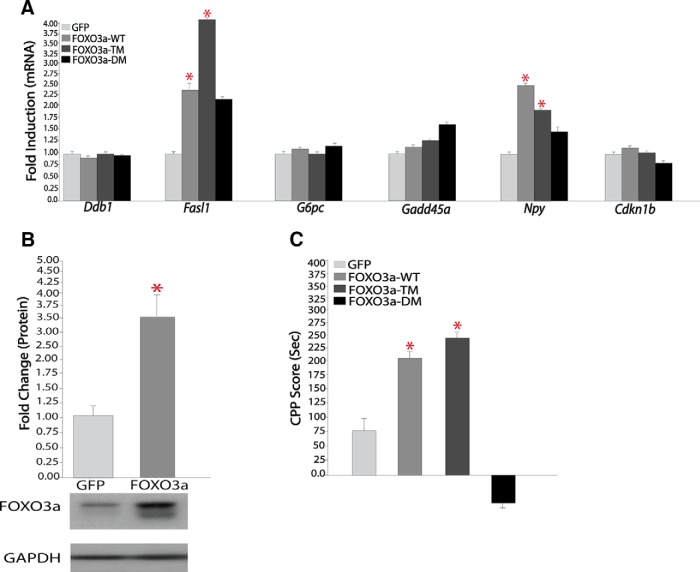Figure 8.
Effect of FOXO3a overexpression in NAc on gene expression and cocaine-induced place conditioning. A, HSV-FOXO3a vectors regulate downstream targets in the NAc, Fasl (HSV-GFP, 1.00 ± 0.12, n = 8; vs HSV-FOXO3a WT, 2.28 ± 0.59, n = 7; vs HSV-FOXO3aTM, 3.98 ± 0.83, n = 7); and Npy (HSV-GFP, 1.02 ± 0.11, n = 11; vs HSV-FOXO3aWT, 2.38 ± 0.64, n = 10; vs HSV-FOXO3aTM, 1.79 ± 0.28, n = 12), with no effect on other targets studied. B, Western blotting of NAc injected with HSV-GFP or HSV-FOXO3a reveals significant induction of FOXO3a protein with the latter vector (HSV-GFP, 1.00 ± 0.09, n = 6; vs HSV-FOXO3a, 3.35 ± 0.60). C, Mice were trained to cocaine (5 mg/kg)- or saline-paired sides of a chamber for 3 d after viral-mediated gene transfer with HSV-GFP, HSV-FOXO3a, HSV-FOXO3a-TM, or HSV-FOXO3a-DM. CPP scores are determined as the difference in time spent between cocaine- and saline-paired chambers. Data are presented as mean ± SEM (n = 8–11). *p < 0.05.

